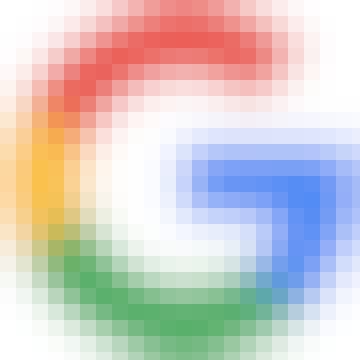What Is a GUI?
Explore what a GUI (graphical user interface) is, how it differs from CLI (command-line interface), and what elements make up a GUI.
![[Featured image] A person in a polka-dot shirt stands in front of a wood-paneled wall and taps the screen of their tablet.](https://d3njjcbhbojbot.cloudfront.net/api/utilities/v1/imageproxy/https://images.ctfassets.net/wp1lcwdav1p1/2EzF2r1H6tEepFrJzYViqm/2300fbc8f24e2220d04bc5d68275a44b/iStock-502176934.jpg?w=1500&h=680&q=60&fit=fill&f=faces&fm=jpg&fl=progressive&auto=format%2Ccompress&dpr=1&w=1000)
A GUI (graphical user interface) is an interface between a user and a computer or website that employs a series of visual elements such as windows, icons, menus, cursors, and buttons to make computing commands. GUIs are intuitive, allowing users to navigate an operating system (OS) or software without extensive technical knowledge.
GUIs differ from command-line interfaces (CLI), which require users to type commands. A GUI allows users to interact with a computer without the programming knowledge that CLI requires. This makes GUIs accessible to a wide range of users, allowing users to easily navigate a program or website and customize certain elements like font size and color. An example of a CLI is MS-DOS, and an example of a GUI is Microsoft Windows. Let’s take a closer look at what makes up a GUI.

professional certificate
Meta Front-End Developer
Launch your career as a front-end developer. Build job-ready skills for an in-demand career and earn a credential from Meta. No degree or prior experience required to get started.
4.7
(18,776 ratings)
359,543 already enrolled
Beginner level
Average time: 7 month(s)
Learn at your own pace
Skills you'll build:
Algorithms, Computer Programming, Cascading Style Sheets (CSS), Software Engineering, Web Development, React, HTML, User Experience, HTML and CSS, JavaScript, UI/UX design, Github, Version Control, Linux, Bash (Unix Shell), Web Development Tools, Front-End Web Development, Responsive Web Design, User Interface, React (Web Framework), Web Application, Application development, Accessibility, Web Design, User Experience (UX), Computer Science, Pseudocode, Data Structure, Communication, Object-Oriented Programming (OOP), Test-Driven Development, Unit Testing, Debugging
Elements that make up graphical user interfaces (GUIs)
When using a GUI to make commands, users rely on WIMPS (windows, icons, menus, pointers, and scroll bars). This is the user interface toolkit and allows for the creation of the GUI. GUIs have various elements, including input controls, navigational components, informational components, and containers. Here is a list of some elements that make up a GUI:
Button: A button shows an action that can occur when pressed through an icon or text.
Dropdown list: A dropdown list gives a user a series of mutually exclusive options that drop down from one button.
Window: A window is a rectangular display of the current program being used.
Icon: An icon is a hyperlinked, intuitive symbol to allow easy user navigation through programs, videos, files, and more.
Search field: A search field gives users a place to type in a word or phrase that will give back useful results.
Toolbar: A toolbar contains buttons, widgets, icons, search fields, and more in a row, often found at the bottom or top of a GUI.
Date and time pickers: Date and time pickers give users a pop-up or drop-down menu to select a specific date and time and input into the program or software they are using.
Breadcrumbs: Breadcrumbs show a user where they are in a system by showing a series of folders or pages they have navigated at the top of a page.
Pop-up window: A pop-up or modal window forces a user to input information into the window’s text box before it allows them to access the rest of the GUI.
Accordion: An accordion is a container that vertically stacks items in a manner so that, when clicked on, they display more information underneath. Items become visible or hidden when the user clicks on the label of the stack.
What is the difference between GUI and UI?
A GUI is a specific type of user interface (UI) where you use a keyboard and mouse or touch screen to interact with a computer through graphical elements. However, a UI can extend beyond graphical representation and include speakers, microphones, fingerprint scanners, cameras, electronic pens, and printers.

Related terms
Learn more about UX with Coursera
On Coursera, you can continue exploring the world of user experience with the Google UX Design Professional Certificate. This course provides you with the tools needed to understand UX research, apply foundational concepts, and create prototypes to test and improve upon.

professional certificate
Google UX Design
Get on the fast track to a career in UX design. In this certificate program, you’ll learn in-demand skills, and get AI training from Google experts. Learn at your own pace, no degree or experience required.
4.8
(82,223 ratings)
1,168,682 already enrolled
Beginner level
Average time: 6 month(s)
Learn at your own pace
Skills you'll build:
User Experience, Wireframe, User Experience Design (UXD), Prototype, UX Research, User Experience (UX), Figma, mockup, Usability Testing, UX design jobs
Keep reading
- October 29, 2024
- October 17, 2024
- October 21, 2024
- February 18, 2025
- February 13, 2025
- March 22, 2025
Coursera Staff
Editorial Team
Coursera’s editorial team is comprised of highly experienced professional editors, writers, and fact...
This content has been made available for informational purposes only. Learners are advised to conduct additional research to ensure that courses and other credentials pursued meet their personal, professional, and financial goals.
Get Coursera Plus For $25/mo
Unlock unlimited learning and 10,000+ courses for $25/month, billed annually.

Learning paths for 40+ in-demand careers
Advance in your career with recognized credentials across levels.
